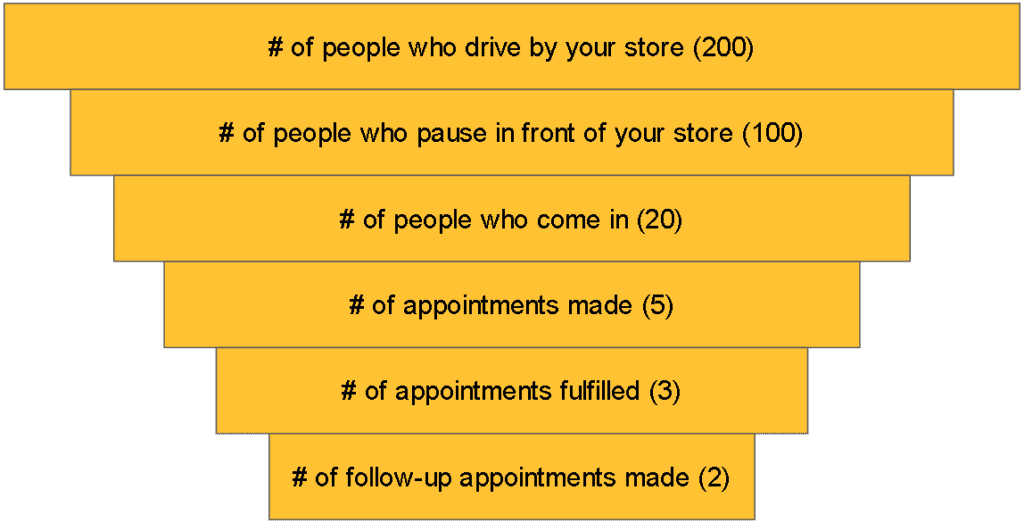Here are some examples of linear funnels:



These type of funnels are only useful if you’re in a very well established space or selling a standardized product that hasn’t changed for a period of time because customers have already built up an expectation on the conversion flow/process and deviation from that expectation creates resistance.
If you’ve already tested, optimized, and have a clear idea on the steps that convert, a linear funnel can help you quickly identify areas for improvement
e.g.
Long sales cycle? Too many steps? Could certain stages be removed or changed?
Big drop-off between certain steps? Can you retarget prospects to reduce funnel leak? Is it an issue with having the wrong action? Or is it an issue with an underperforming sales rep not using the right techniques to convert a prospect in that step?
Prospects lingering too long in a certain stage? Are you following up with them? Do they have all the information they need to move to the next step? Again, is it the wrong type of action? Or poor technique?
The problem is…
Even under ideal circumstances, prospect rarely take a linear path to converting into a customer.
One customer might find out about you through a referral -> read reviews -> then buy immediately.
Another might see your ad -> read reviews -> research competitors -> then buy.
Ergo, a good and comprehensive Sales + Marketing Strategy (or Launch Plan/Go-to-market Strategy if you’re putting out a new solution) should account for the many different paths that a customer might take in order to convert.

I’m a big fan of the simplified Buyer’s Journey above. It works as a great springboard to dive into the development of your much more intricate strategy. The key is to understand that you’ll need to create multiple funnels that often intersect or even double-back with each other, it’s a lot more like a tangled web rather than a straight line.
The Sales + Marketing Map
Is a tool I’ve created based on Hubspot’s model, it helps you visualize your customer’s pains, objectives, motivations, questions, and source of answers throughout their journey.
From there, you can begin to plan the:
- Topics of your content
- Medium/form it takes – e.g. blog/video/workshop/demo
- Channels to meet your customers where they’re seeking answers
- Call to Actions and linkages to your other resources/funnels
Enabling you to create connection points that better facilitate conversion in your web of multiple funnels.
Study the spreadsheet below for an example, feel free to duplicate or copy it.
Feel free to reach out if you need a blank copy: chin@classynarwhal.com
Pingback: Advisory Email – Aug 2022 - ClassyNarwhal